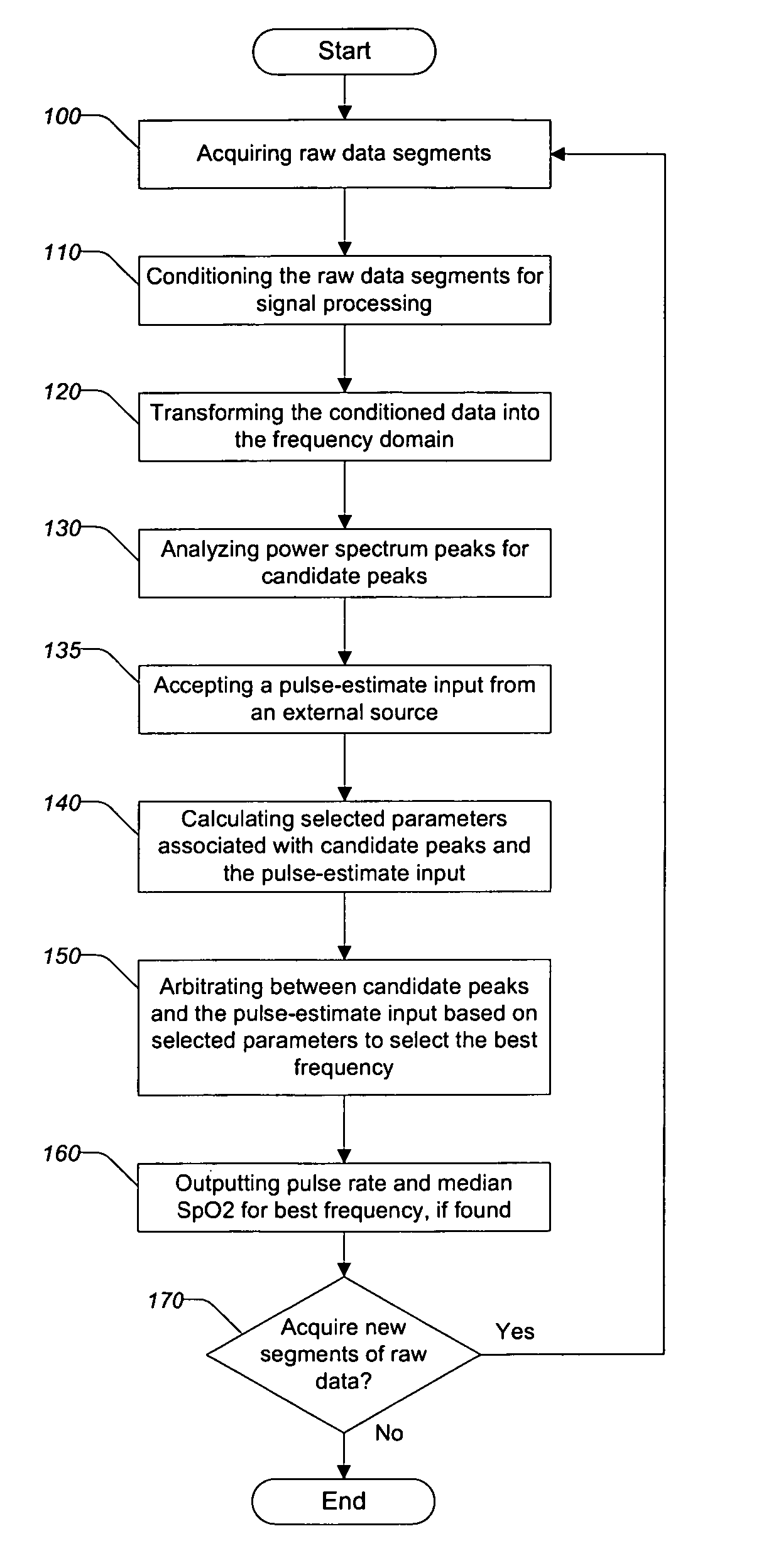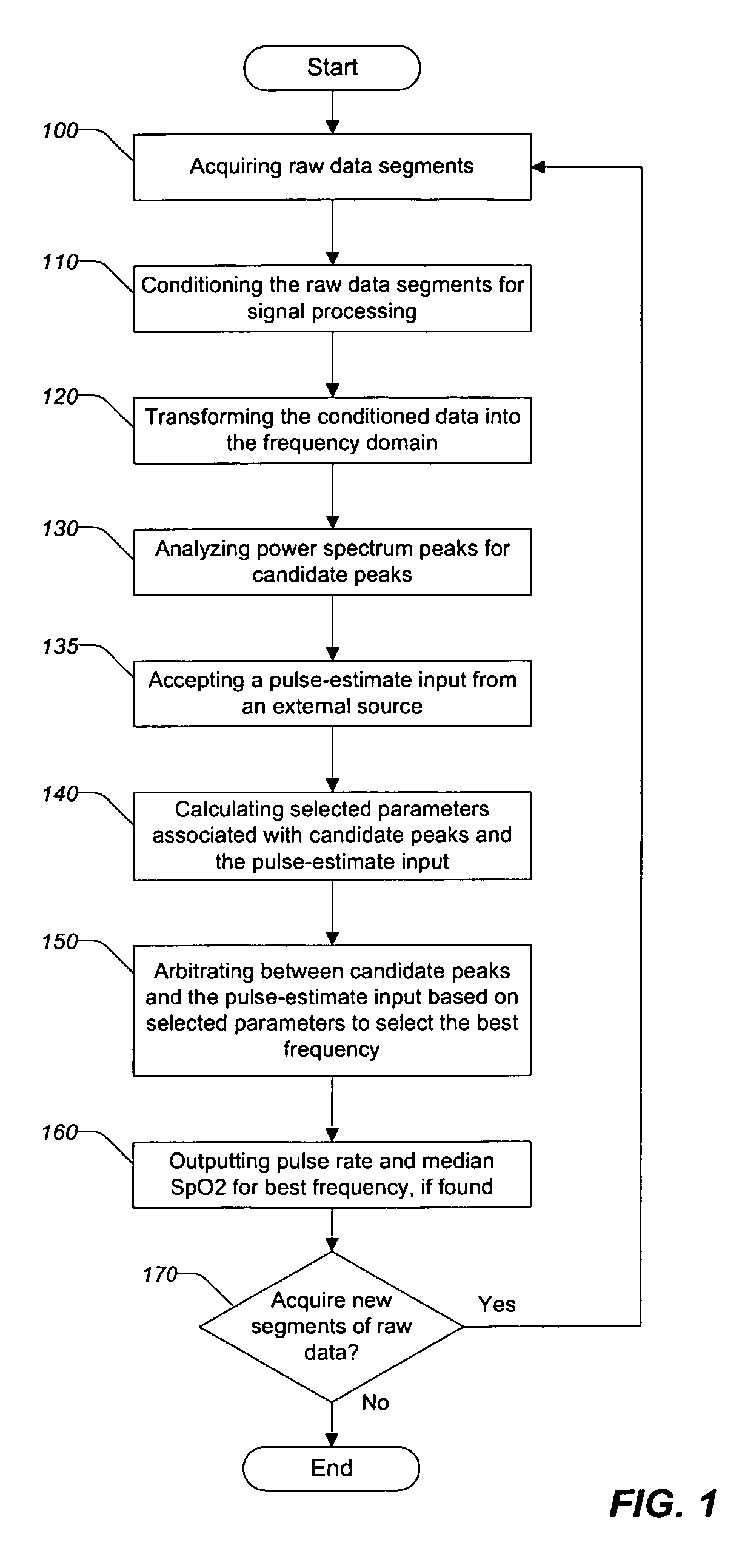Method, apparatus, and system for removing motion artifacts from measurements of bodily parameters
a technology of motion artifacts and bodily parameters, applied in the field of signal processing, can solve the problems of additional interference, difficult measurement of physiological signals, and interference noise inherent in the body, and achieve the effects of eliminating noise in physiological measurements, and reducing the difficulty of measuremen
- Summary
- Abstract
- Description
- Claims
- Application Information
AI Technical Summary
Benefits of technology
Problems solved by technology
Method used
Image
Examples
Embodiment Construction
[0045]The following detailed description discloses methods, apparatuses and systems for removing motion artifacts from measured plethysmographic waveforms, particularly, but without limitation, those used in pulse oximetry. A system embodiment of the invention includes pulse oximetry hardware and associated software to perform the motion artifact suppression. A method embodiment of this invention includes a series of steps that exploit certain characteristics of plethysmographic waveforms. The methods, apparatuses and systems described below are suitable for use with sensors employing light transmitted or reflected through bodily tissues and substances. For convenience, the following detailed description will assume measurement of light that has been transmitted through a finger of a human. The terms “signal” and “waveform” are used interchangeably herein.
[0046]FIG. 1 is a high-level flowchart of an embodiment of a method of removing motion artifacts from plethysmographic data and o...
PUM
 Login to View More
Login to View More Abstract
Description
Claims
Application Information
 Login to View More
Login to View More - R&D
- Intellectual Property
- Life Sciences
- Materials
- Tech Scout
- Unparalleled Data Quality
- Higher Quality Content
- 60% Fewer Hallucinations
Browse by: Latest US Patents, China's latest patents, Technical Efficacy Thesaurus, Application Domain, Technology Topic, Popular Technical Reports.
© 2025 PatSnap. All rights reserved.Legal|Privacy policy|Modern Slavery Act Transparency Statement|Sitemap|About US| Contact US: help@patsnap.com



